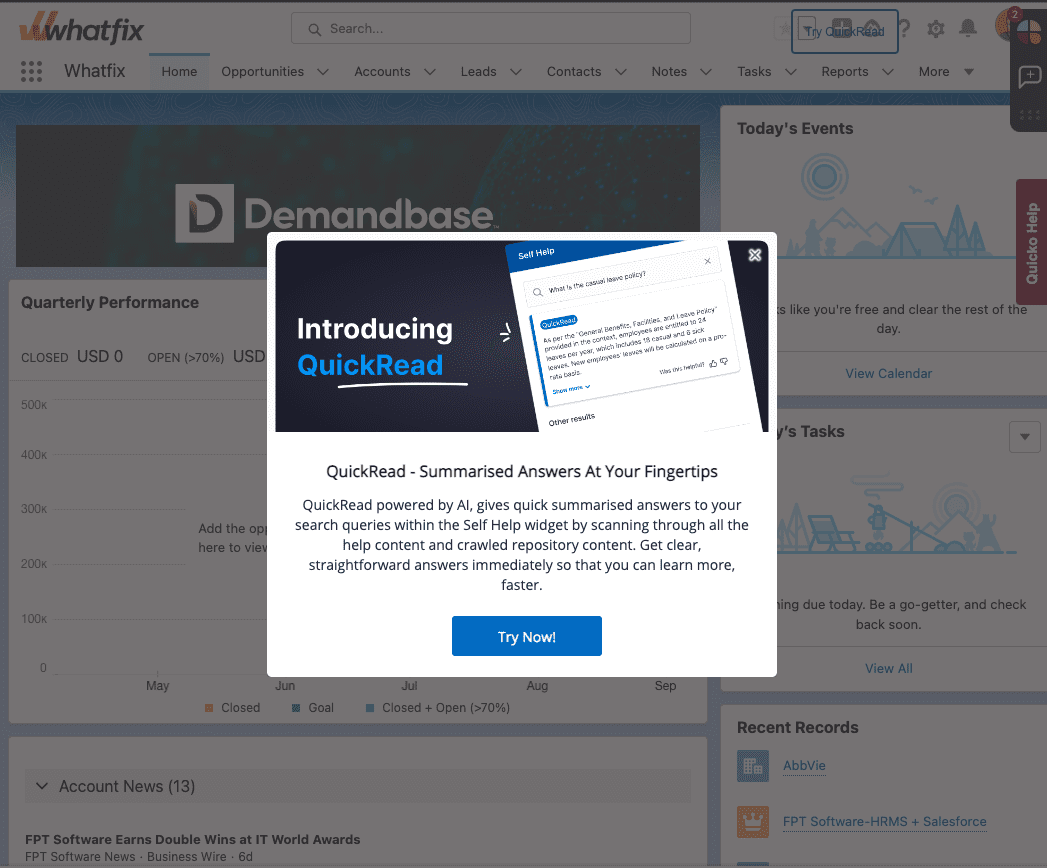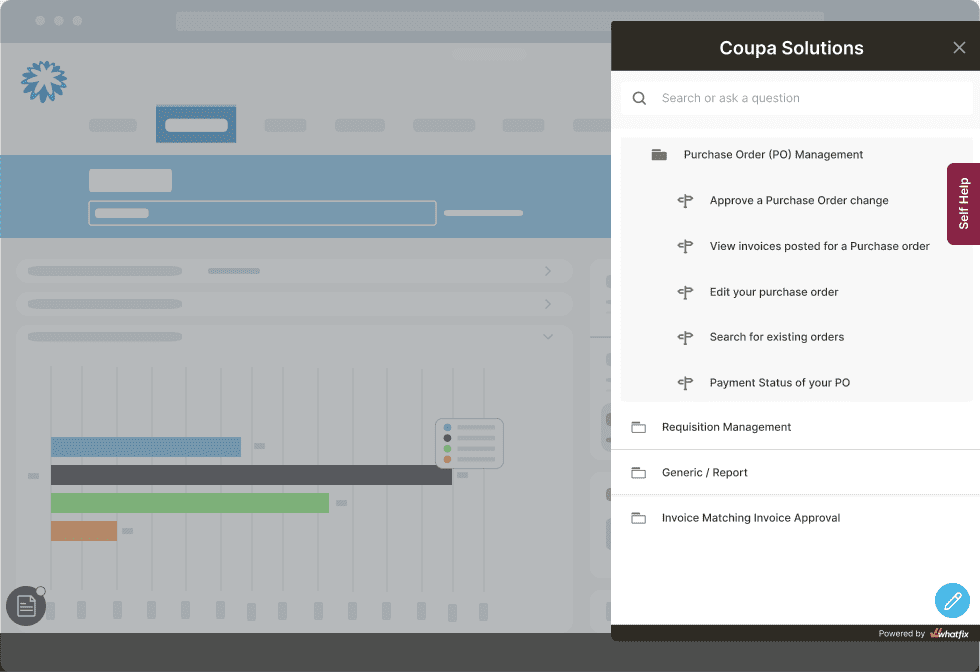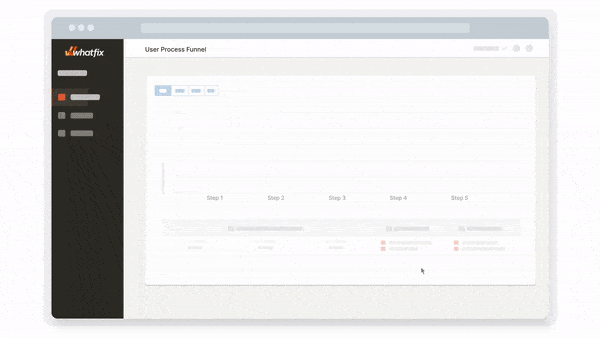Coupa Implementation: How to Drive User Adoption
- Published: April 15, 2024
- Updated: April 23, 2024

Coupa is an enterprise procurement software that enables enterprises with digital solutions to transform source-to-pay processes, such as accounts payable, contract management, vendor management, expense management, and more to empower finance, procurement, and supply chain functions.
While its enterprise software offerings can enable organizations to achieve digital procurement transformation and drive business outcomes, it’s not an “out-of-the-box” solution to your procurement-related challenges.
IT teams must prepare for their Coupa deployment by planning a comprehensive Coupa implementation plan that starts with securing leadership buy-in, builds the technical infrastructure required, enables end-users with training and support, and continuously optimizes Coupa’s UX and workflows to drive adoption and maximize ROI.
In this article, we’ll discuss how enterprises can successfully drive Coupa adoption by building an implementation plan focused on the end-user with contextual guidance, real-time support, constant communication, and analyzing end-user usage.
You’ll also learn how Whatfix’s DAP for procurement transformation drives Coupa adoption and empowers organizations to achieve their procurement-related business outcomes.
10 Steps for a Successful Coupa Implementation
Coupa implementations are complex – every organization has contextual challenges depending on its size, industry, unique needs, digital maturity, change readiness, and more.
However, IT teams can follow the following steps to follow a proven blueprint for successful Coupa implementation and user adoption that empowers organizations to achieve their digital procurement goals and business outcomes.
1. Build a change implementation team
You’ll first want to build a cross-functional change management team that includes leadership and stakeholders from IT, sales, procurement, finance, vendor relations, and more – anyone impacted by the software implementation should have a voice at the table.
This will help IT build and deploy a Coupa instance that provides real solutions to your organization’s unique procurement challenges, needs, and business problems. You’ll want to complete all pre-launch planning in this step, such as the project scope, timeline, change communication plan, and more.
2. Understand your Coupa goals and expected procurement transformation outcomes
What are the core goals of your Coupa investment? What benefits and outcomes do you expect from the new procurement solution? What unique challenges does your company face when implementing new enterprise applications like Coupa?
These questions should be answered before you sign the Coupa contract. They should drive your implementation strategy and always be at the forefront of the IT configuration and deployment conversation. These transformation goals will influence how your Coupa implementation is handled.
3. Engage and identify implementation partners and technology providers
Coupa implementations are an investment, and IT teams should look to additional third-party solution partners to ensure that investment is successful. Research and identify Coupa-certified implementation experts and practitioners to help deliver complex deployments that deliver ROI.
Examples of Coupa implementation partners include Accenture, Deloitte, and KPMG – with many other premier and certified partners being listed on Coupa’s implementation partnership website.
Additionally, digital adoption platforms (DAP) like Whatfix empower IT teams with a no-code tool to create in-app guidance on Coupa to enable and support end-users, as well as provide end-user engagement and usage analytics to identify friction points, optimize workflows, and drive end-user adoption.

You can find Whatfix in the Coupa Marketplace or learn more about Whatfix for procurement adoption here
4. Document, map, and design Coupa business processes and workflows
Designing your procurement-related business processes is critical to your Coupa transformation and implementation project.
Start by documenting all legacy procurement processes. What is working and what isn’t? Rely on stakeholders from across your organization to gather information and feedback to help pinpoint needs, understand challenges, and build procurement-efficient, contextual workflows for your organization.
Once you have an inventory list of all Coupa workflow requirements, conduct a business process mapping exercise to visualize your procurement workflow needs. This will provide your IT team with a list to work off to start creating your Coupa processes, tasks, and workflows. Prioritize these workflows by taking a tiered approach to the most critical business needs.
Examples of procurement workflows to document include:
- Submitting and reimbursing expenses.
- Intake and purchasing processes.
- Selecting the approved supplier.
- How to convert sourcing awards into contracts.
- Accounts payable process
- Supplier and vendor onboarding.
5. Inventory all Coupa modules required and third-party technology integrations
Before configuring your Coupa workflows and finalizing deployment, you must confirm that you have all the functionality from Coupa you need to accomplish your digital procurement goals.
Coupa has four main product lines – Procure, Invoice, Expense, and Pay. It also features additional modules to customize a Coupa deployment to help achieve digital outcomes to improve supply chain management, strategic sourcing, inventory management, contract management, supplier and vendor management, and more.
Don’t forget to consider how you will integrate it with the mission-critical accounts payable and procurement tools in your enterprise software stack. The most significant application to consider is your ERP system – whether you use S/4HANA, Oracle, NetSuite. But don’t forget about your CPQ, e-signature, CLM, CRM, and other critical software that will need to send data and communicate with your Coupa application.
6. Test your Coupa deployment in a sandbox environment
Before deploying Coup, create a replicated version of your new Coupa application in a sandbox environment for user testing. This provides IT teams with a duplicate Coupa environment to test a small beta launch to conduct user acceptable testing, analyze workflow usage, and monitor performance. It also provides hands-on simulating training in the future for onboarding new end-users that won’t impact your actual Coupa data.
In your Coupa sandbox application, permit a small beta group of end-users access to the test environment and request they complete a few tasks to collect data and analyze usage.
Monitor usage, track dropoff areas and friction points, collect end-user feedback, and analyze overall Coupa performance. This provides insights to help take a data-driven approach to improve your Coupa experience and workflows and catch any significant performance or workflow friction before the official launch.
With Whatfix Mirror, IT teams can quickly create a Coupa sandbox environment to conduct user testing on new configurations, identify bugs and user friction, and build training scenarios for end-users – all without the risk of a live system that Coupa end-users are uncomfortable with, doesn’t work the way its intended, or is littered with bugs and performance issues.
7. Create a Coupa end-user onboarding and training plan
After your beta test is complete, it’s time for the most underappreciated step in the implementation plan – creating a Coupa end-user onboarding and new employee software training strategy for driving end-user adoption. This is often overlooked in importance as it’s less of an IT technical project and is people-centric, requiring different skill sets to enable end-users.
First, build contextual onboarding and training paths for all Coupa user types – from those in accounts payable, expense management, purchasing, vendor management, etc. Different team members will use Coupa differently, both in the amount of time spent in the product, how often they use different workflows, and what tasks they are responsible for completing in Coupa – all requiring contextual role-based training.
With a DAP like Whatfix, accelerate your Coupa user time-to-proficiency with in-app guided onboarding experiences like:
- In-app Tours for guiding new Coupa users through the application on their first use. This is critical during your Coupa launch and when onboarding new team members responsible for completing tasks in Coupa.
- Interactive walkthroughs (we call them Flows) that take Coupa users step-by-step through procurement processes contextual to them (like selecting the preferred supplier, submitting an expense, or onboarding a new vendor.)
- Task Lists that provide a gamified user checklist to engage new users and help them realize Coupa’s value from their first visit.

It doesn’t stop at onboarding. You’ll need reinforcement end-user training to provide additional procurement process knowledge and nudge Coupa users to follow the correct digital procurement and supply chain workflow.
With Whatfix, create:
- Smart Tips to provide essential info at critical friction points or for tasks that are not often completed, like how to merge duplicate supplier accounts.
- Field Validations to ensure end-users enter their personal information and data into Coupa correctly, comprehensively, and in the correct format. This is critical for compliance laws, especially in sectors with more regulation like in healthcare and financial services.


Sheila Dusseau, Head of Global Legal Operations at Ferring
8. Announce the Coupa deployment
As you get closer to the full launch of Coupa, it’s time to make the software rollout process official and communicate it to all end-users who will be impacted. Each affected department should have already been in the loop, as a stakeholder from each team should have been selected to be a part of your Coupa implementation change team.
Take an omnichannel communication approach to announce the Coupa rollout. This should include:
- Org-wide emails outlining why the procurement change is happening and when it will be released.
- In-person announcements at all-hands and department meetings.
- Requesting people managers disseminate the announcement to their team members.
- Slack announcements in any team channels impacted by the change.
For organizations who use a digital adoption platform (DAP) like Whatfix, drive change awareness by creating Pop-Up alerts that overlay your current legacy procurement processes and ERP systems with information on when the change is happening and a CTA link to learn more about the change (or to go to the new Coupa application, if it’s already launched.)

ABOVE: Example of an in-app pop-up on Salesforce, built with Whatfix. In this example, we used a pop-up internally for our sales organization to adopt QuickRead, a new feature we integrated with our Salesforce platform. You can use pop-ups like this on your legacy procurement platform (and other apps, like your email client) to alert employees of the upcoming change – and when you launch your new Coupa instance, you can push users to the new system.
Pop-Ups can overlay any web application you have Whatfix deployed on, from your current procurement and ERP software, or other widely-used web applications like your CRM or email client.
Get creative with these in-app announcements, like embedding a video from your IT and procurement leader on how the Coupa transformation project will provide a better experience for employees with examples of how the change will positively impact their day-to-day. Showcasing value to employees early and often is the key to driving end-user adoption, ultimately resulting in digital procurement transformation ROI.
9. Provide on-demand Coupa user support in the flow of work
Coupa is a complex procurement enterprise software, with organizations heavily customizing and configuring their instances to meet their own business needs. This is reflected in Coupa’s G2 reviews, with the two most common complaints being a complex learning curve and a UI that lacks intuitiveness.
IT teams must provide support in the flow of work to their Coupa end-users to overcome friction areas, identify common troubleshooting issues, and help end-users overcome problems at the moment of need to create a frictionless user experience that enables employees to achieve their goals.
If end-users fail to use Coupa, incorrectly use it, experience friction-heavy procurement workflows, and encounter frequent issues, your Coupa deployment will become a failed digital investment with cumbersome workflows and poor usability that end-users hate to use – leading to unproductive employees and a failed Coupa implementation.
To overcome this, enable Coupa end-users with a digital procurement end-user support experience that provides on-demand, contextual support – in the flow of work – for all your procurement and supply chain team members.
With Whatfix DAP, enable end-users with Self Help, an in-app performance support assistant that overlays your Coupa UI.

Self Help integrates with your Coupa SOPs and process documentation, company policies, corporate handbooks, intranet portals, file drives, training and onboarding resources, LMS modules, and third-party resources, aggregating all this knowledge and contextual procurement and supply chain information into a self-service help center that enables end-users in the flow of work.
End-users can search Self Help for any contextual help resource or issue they’re encountering, with Self Help contextually populating results depending on where an end-user is in Coupa. Each resource center entry includes a link to an SOP or help article, a link to a third-party resource like a Coupa help article, can prompt an in-app guided Coupa experience that walks users through a process, or can play an embedded video.
New to Self Help is QuickRead, Whatfix’s newest AI product update. QuickRead acts as a ChatGPT-style chatbot that learns from your company resources and documentation, helping to provide conversation support based on any contextual issue your Coupa end-users experience – pulling answers for your company’s knowledge and help resources right into your Self Help.
Software clicks better with Whatfix's digital adoption platform
Enable your employees with in-app guidance, self-help support, process changes alerts, pop-ups for department announcements, and field validations to improve data accuracy.
10. Monitor Coupa usage and track adoption with end-user analytics
While your Coupa implementation is a one-time project, maintaining, updating, and optimizing Coupa while also supporting Coupa end-users is an ongoing task your IT and procurement teams now own.
Continuously improve Coupa user experience and workflows to maximize digital investment ROI by monitoring end-user usage and adoption through Whatfix’s behavioral analytics and usage tracking platform.
Analyzing Coupa user behavior empowers IT, finance, and procurement teams with data to make informed decisions, make platform changes, improve their Coupa procurement workflows, and build new in-app experiences with Whatfix. This creates a flywheel effect that continuously optimizes Coupa workflows and user experience to develop frictionless technology experiences that enable end-users and drive procurement-related business outcomes.

With Whatfix, IT teams who are responsible for Coupa optimization and maintenance are empowered with:
- Guidance Analytics to understand how end-users are engaging with in-app training and support content created with Whatfix. Answer questions like “How many team members completed their Coupa onboarding Task List??”, “How many end-users are engaging with Self Help?”, “What Coupa Flows are played the most?”, “Are there common themes appearing in end-users Self Help searches?”.
- Product Analytics is a more robust, comprehensive event-tracking tool from Whatfix. This empowers procurement and IT teams to collect any data point they want, augmented with behavior data, demographic data, role-based data, and more. With a product analytics tool like Whatfix, identify where end-users are experiencing friction and dropping off your procurement software, map optimal Coupa process flows, create user cohorts to target with new in-app guidance, and more.
- Enterprise Insights provides IT teams with data to track who is (and isn’t) using Coupa, as well as other mission-critical procurement software like your CRM, CPQ, CLM, and ERP. It tracks the number of Coupa licenses you have, how many end-users use them, what teams use the procurement software more than others, and time spent in Coupa.
How to Drive Coupa Adoption With Whatfix DAP
Whatfix supports Coupa implementations by driving end-user adoption and maximizing digital procurement ROI by focusing on the end-user.
Whether your organization is migrating to Coupa from another procurement software vendor or modernizing legacy procurement and supply chain processes, trying to get your Coupa implementation back on track, or want to extract more value from your Coupa investment, Whatfix is your partner in your journey to Coupa adoption.
With a DAP like Whatfix, accelerate your Coupa transformation timeline and maximize digital procurement ROI by enabling end-users with contextual in-app experiences and tailored support to adopt it fully – driving maximum supply chain outcomes while future-proofing your organization’s ERP and fiance processes with user-centric procurement technology.
Whatfix drives Coupa transformation by making sense of complicated enterprise procurement software – providing end-users contextual in-app guidance and assistance at critical moments to maximize their productivity and drive business outcomes.
With Whatfix, create user-centric Coupa experiences that enable all end-users, from beta test to years after the deployment, by:
- Providing IT and implementation teams with a solution to quickly create a sandbox Coupa environment to beta test with users before full deployment, conduct usability tests, and provide hands-on user simulation testing with Whatfix Mirror.
- Accelerating Coupa end-user onboarding during migration and onboarding new employees onto the procurement tool with in-app Tours, Flows, and Task Lists providing hands-on, interactive training within Coupa. Use Task Lists to gamify new user onboarding by awarding certifications to those who complete the checklist.
- Guiding users through complex Coupa procurement workflows with Flows and providing critical knowledge and key moments in the UX with Smart Tips, helping to provide reinforcement learning that always works in the background of your digital procurement and supply chain processes.
- Supporting Coupa end-users with on-demand, self-help support via Self Help to create self-sufficient end-users, improve knowledge transfer, drive awareness of support resources, and reduce IT workload by deflecting procurement-related IT issues– all in a helpful “user assistant” module that overlays yourCoupa UI. IT teams can integrate any knowledge repository to Self Help and add any resource to the help center, including entries that prompt an in-app guided Flow, links to third-party Coupa resources, links to SOPs and other process documents, links to company policies and drive folders, alerting users to compliance regulations, video embeds, and more.
- Communicating any new Coupa process change, application update, new feature launch, upcoming deadlines, or general company news and HR announcements (from internal memos, performance review reminders, new laws or regulations, team building events, etc.) with in-app Pop-Ups that overlay your Coupa deployment.
- Collecting end-user feedback with in-app Surveys.
- Analyzing end-user behavior, Coupa adoption, license usage, and Whatfix content engagement with Guidance Analytics or our more robust, comprehensive Product Analytics.
- Translating in-app Whatfix-build content to over 70 languages automatically, depending on where your Coupa end-users are located – as well as empowering end-users to export any in-app content into text documents, slide decks, GIFs/videos, and more to provide offline training and support for global workforces.
We know a Coupa implementation and migration project is a major IT challenge for your organization. Whatfix is an insurance policy for this essential, business-critical digital procurement investment. It maximizes Coupa ROI by enabling end-users to correctly and comprehensively use the platform and its contextual workflows – driving business outcomes with better employee experiences for the modern age.
Request a demo of Whatfix DAP for digital procurement applications now and get started on your Coupa adoption journey today!

Thank you for subscribing!



